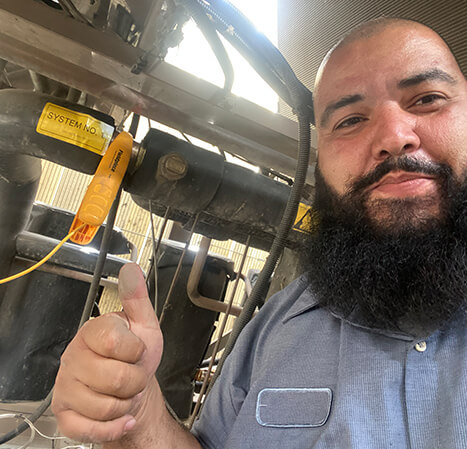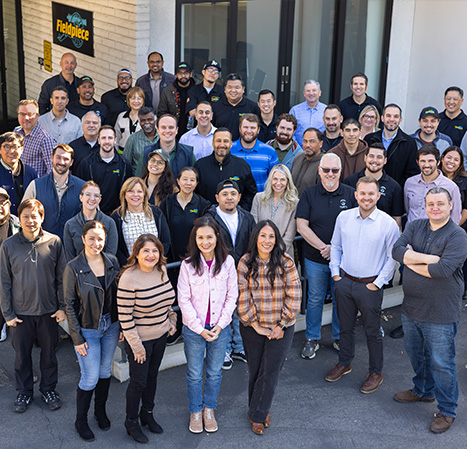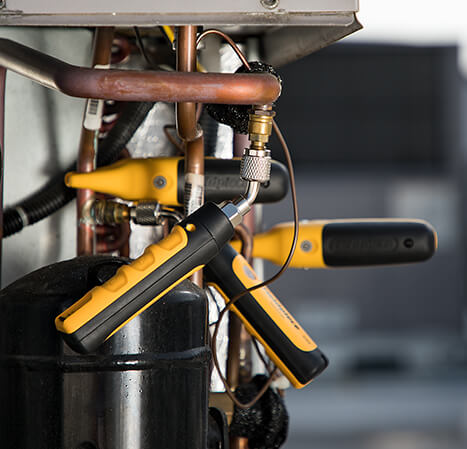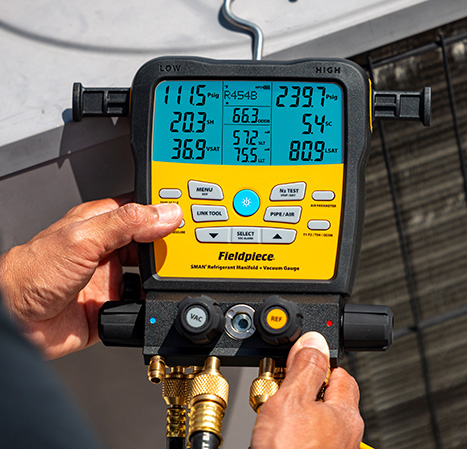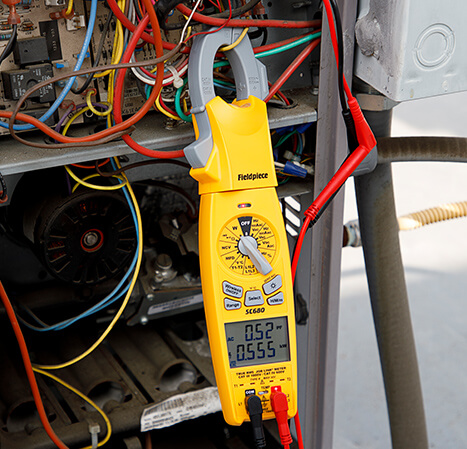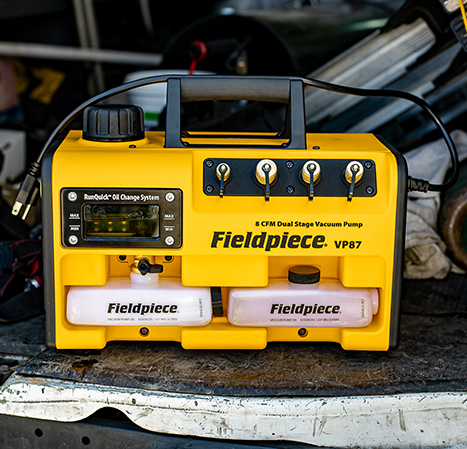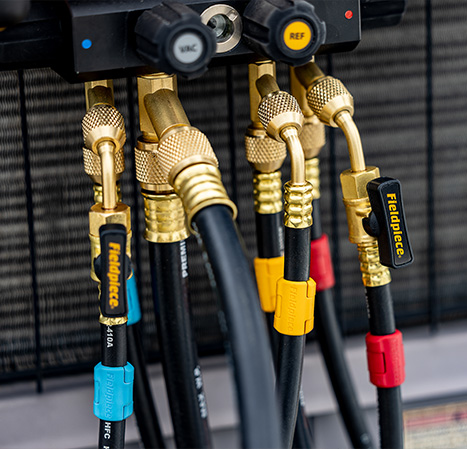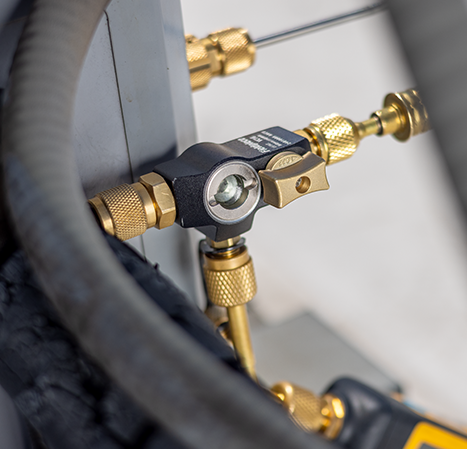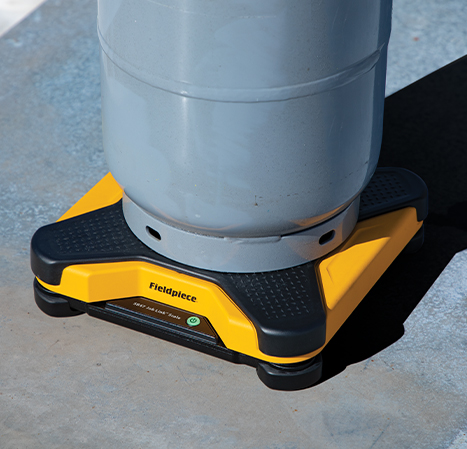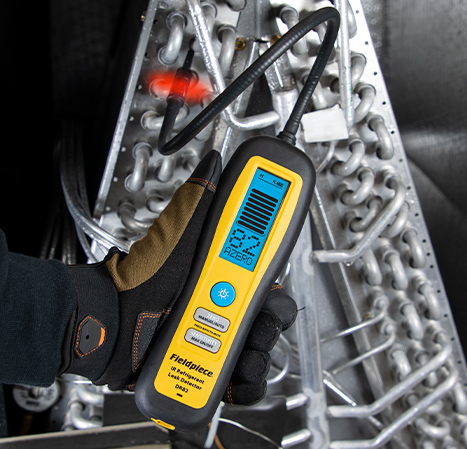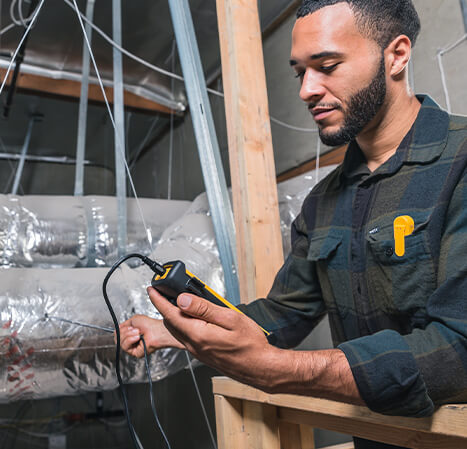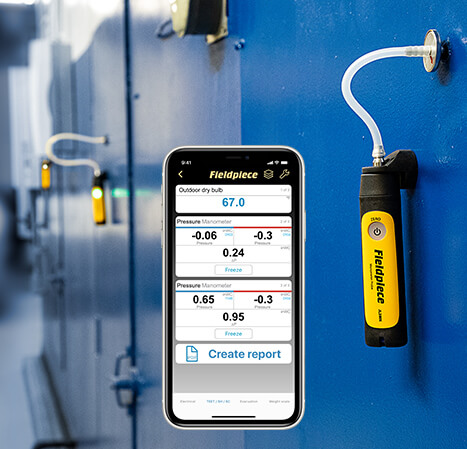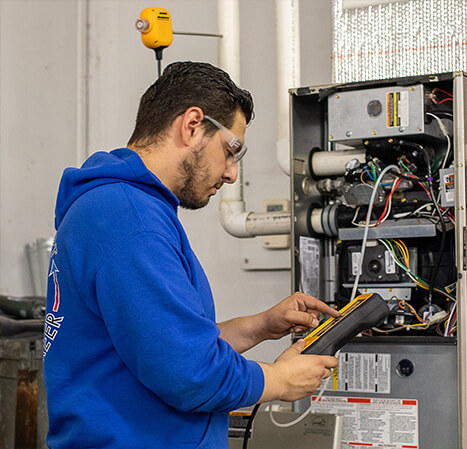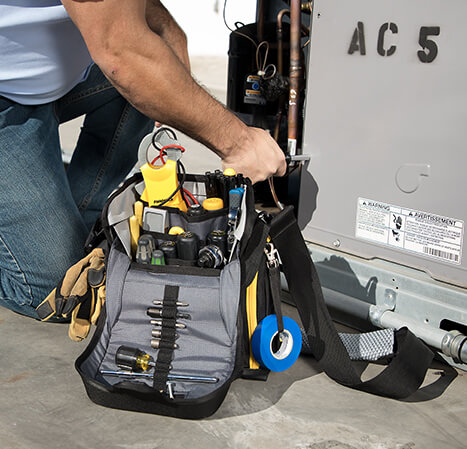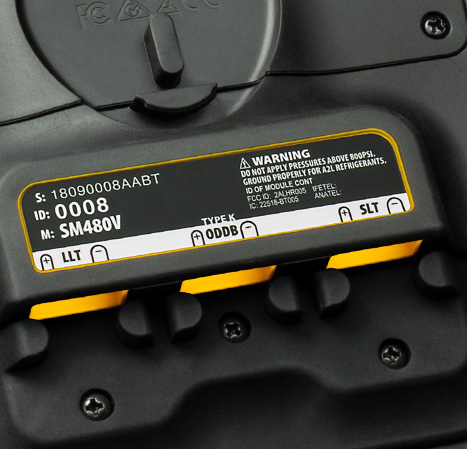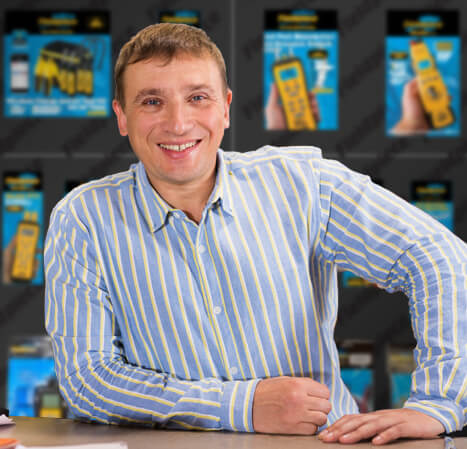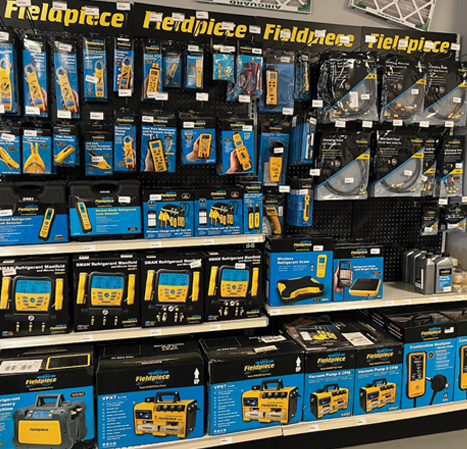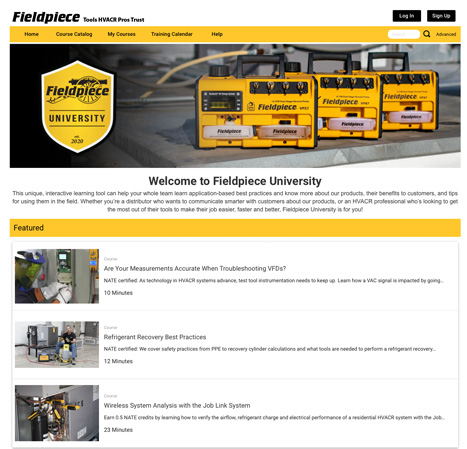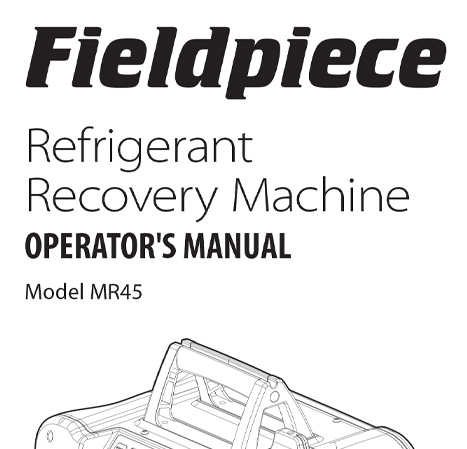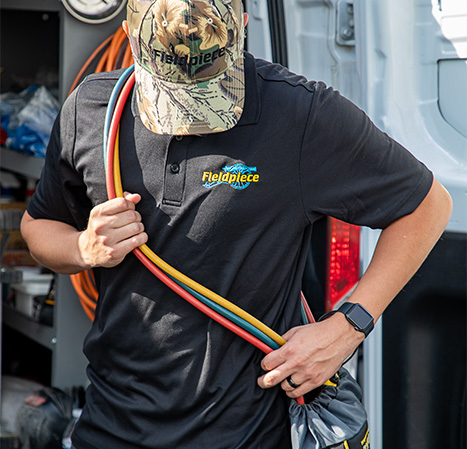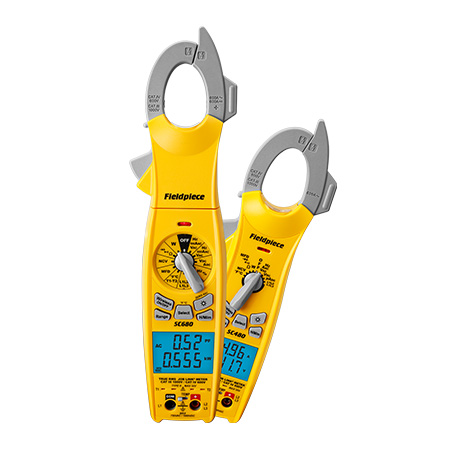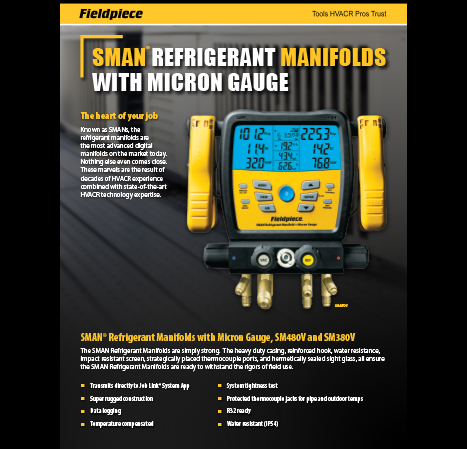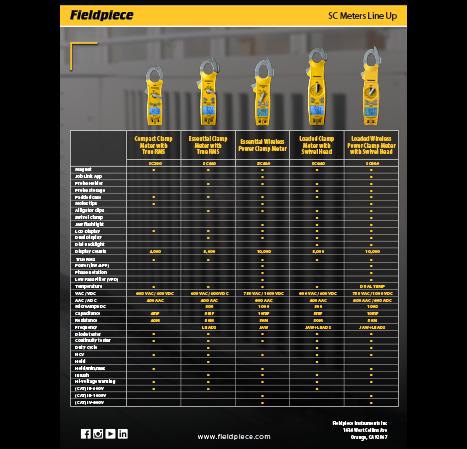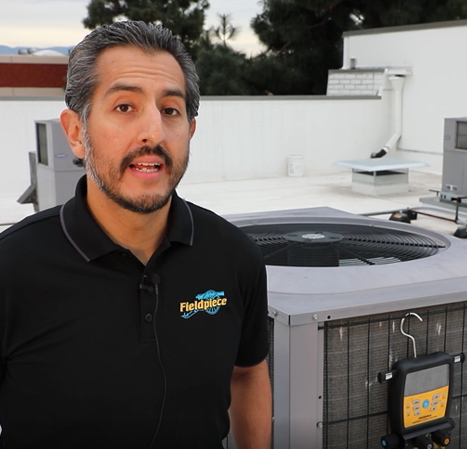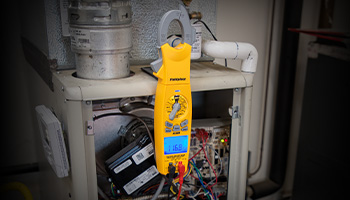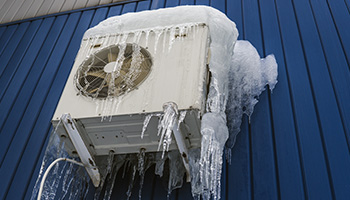When working with a heating appliance, determining the cause of any problems is job one. One of the best tools to use for these tests is a clamp meter. It helps a tech discover and diagnose electrical problems that could be leading to other issues that the customer is seeing on their thermostat.
For a tech, it’s critical to have the right tools for testing and troubleshooting electronic controls. This ensures the safe and accurate measurement of parameters like amperage, capacitance, and voltage.
Picking up a clamp meter, like the Fieldpiece SC680 – 600 AC/DC Swivel Clamp Meter or a SC480 – 600A Clamp Meter helps a tech get to the bottom of what’s happening. Each clamp meter features a clamp jaw that’s designed to wrap securely around a wire. This helps the meter quickly and easily measure the amperage and frequency without the technician needing to touch the circuit directly.
These days, many new systems come with Variable Frequency Drives (VFDs). Their motors offer increased efficiency, but the noise they generate on the exiting voltage signal adds a level of complexity to diagnosing a system. The SC680 and SC480 each filter out the noise from the VFD and give the tech an accurate reading. Few other meters on the market do what these clamp meters do.
Not every diagnostic test runs using just the clamp meter though. Newer systems like mini-splits operate with high voltage signals and sometimes require thinner test leads to measure. The SC680 and SC480 measure up to 1000VDC and 750VAC and measure resistance into the megohm (MΩ) ranges. These higher resistance values are commonly seen on today’s more advanced systems. The SC680 and SC480 also come with needle tip test leads designed specifically for measuring Molex plugs on mini-splits.
When using a meter for the first time, use it to test known voltages – like a wall outlet or another known circuit on the job site. This helps the tech become acclimated with the device. In the outlet, the tech should find around 120 volts. But this may vary depending on the time of day, location, or during time of peak demand.
Another task for technicians is confirming proper operation of the flame sensor. The flame sensor generates a small current, measured in uADC. The SC680 and SC480 can also measure uADC, allowing the technician to diagnose and rectify on the spot.
When a tech is working on a transformer, both the primary and secondary side should be checked. There should be approximately 24 volts coming out of the secondary side. When the voltage on the primary side goes up, the secondary voltage should go up as well.
A continuity test shows a tech if a circuit is being completed in the system and helps them diagnose bigger issues like a broken wire in a motor. This test also shows if a switch is closed or open. It’s important to ensure all power is off to the circuit.
All of these tests can be quickly and safely performed using the Fieldpiece SC680 – 600 AC/DC Swivel Clamp Meter or the Fieldpiece SC480 – 600A Clamp Meter.
To learn more about these versatile clamp meters, visit Fieldpiece.com.
 English
English French
French Spanish
Spanish

